What a pleasure to reach you through this medium and share a theme rather than allows us to see the importance of having our life project.
Ramón Manages Four Major Projects
The objective is to stimulate construction in the most marginalized communities, the construction of a slaughterhouse, among other aides for this productive sector
UTBB Students Participate in Mita TechTalks 2013
Mexico is currently generating more software developers than the United States, attracting the attention of investors interested in the area’s great potential.
Puerto Vallarta NEW IMAGE
PUERTO VALLARTA, Jalisco (OEM-Informex.) - The so-called "Spring of the Dead" the government of Jalisco built on the waterfront of the city, and those who promote this tourist destination in another of the attractions of this city.
Banderas Bay and Puerto Vallarta Opens Retirement Care Center
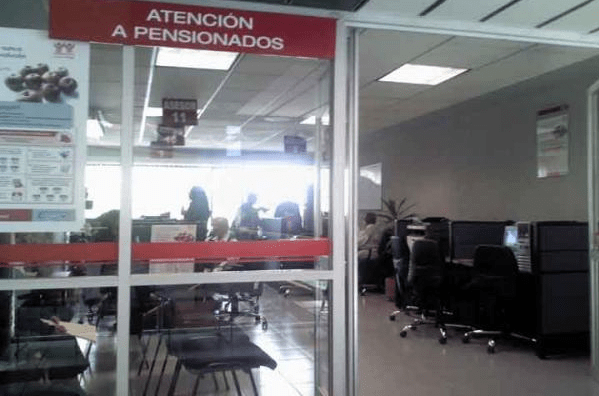 With the capacity to serve 260 thousand former workers a month to do their process of returning the housing sub 97, opened the Retirement Service Center in Banderas Bay and Puerto Vallarta, administered by the Institute's delegation in Nayarit . This from that in January the reform came into force the Law of Infonavit considering among other things, the delivery in a single installment of the accumulated balance in the housing sub-97 workers who pensionaron in terms under the Social Security Act 1973.
With the capacity to serve 260 thousand former workers a month to do their process of returning the housing sub 97, opened the Retirement Service Center in Banderas Bay and Puerto Vallarta, administered by the Institute's delegation in Nayarit . This from that in January the reform came into force the Law of Infonavit considering among other things, the delivery in a single installment of the accumulated balance in the housing sub-97 workers who pensionaron in terms under the Social Security Act 1973.
The regional delegate of the Institute Arits Trillo said Beatriz Rodriguez who will care workers have the ability to provide a quality service. "Remember that they are people who are over 60 years old, who require highly specialized care and direct, to be able to explain what it is. And they can be to help with the media with the unfamiliar as it is a computer, Internet, as it is sometimes a 01,800 ", adding that the center will be open from 8:30 am to 2: 30 pm by appointment.
The appointment process must be performed pensioners through the website www.infonavit.org.mx or number 01 800 008 3900, if it is necessary to go to boarding care facility.
Finally the company said they have served a total of 7,000,624 pensioners of which 6000,312 have taken delivery of resources either by electronic transfer to the account established pensioner himself or through an automatic payment to the account where they receive their pension now. Being a total of 60 million 882 thousand 930 pesos resources that have been returned.
[readon1 url="http://mexico.cnn.com/?hpt=ed_Mexico"]Source:mexico.cnn.com - Translation by Suyapa Ajuria[/readon1]
Could the Mexican Riviera be Cruising's Comeback Kid?
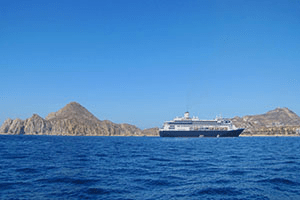 In cruising's early years, it didn't get much more glamorous than a cruise on the Mexican Riviera. The popular TV show “Love Boat” showed Princess ships and the B-list celebrities they carried stopping at then-exotic ports such as Mazatlan, Puerto Vallarta and Acapulco.
In cruising's early years, it didn't get much more glamorous than a cruise on the Mexican Riviera. The popular TV show “Love Boat” showed Princess ships and the B-list celebrities they carried stopping at then-exotic ports such as Mazatlan, Puerto Vallarta and Acapulco.
Today, you'd be hard-pressed to find Acapulco on a mainstream cruise itinerary; in 2014, only a handful of luxury lines such as Regent Seven Seas, Silversea and Oceania, planned stops at the Pacific Ocean resort town. Concerns about the safety in some ports, along with negative perceptions and increased competition from destinations elsewhere, moved Mexican Riviera itineraries off some cruise line's calendars all together.
The numbers tell the story. Puerto Vallarta went from having a banner year in 2008, when 180 ships arrived, to a mere 82 in 2013. Mazatlan suffered a significant financial hit when a string of violent incidents prompted cruise lines to pull out completely in 2011, losing all of the 520,000 passengers that had visited in 2010.
Even Cabo San Lucas, which experienced a boom in tourists drawn to its hotels, resorts and bars, has seen its cruise business falter. In 2008, nearly 400 ships visited Cabo; this year, that number is down to 112.
Those figures sound dire. But this week, the region received a major boost when Carnival announced it would be sailing in the Mexican Riviera year-round in 2015, including several stops at Mazatlan. The ports have also been taking significant steps to attract more cruise business, including the following:
Working Together. With a large expat community and a thriving restaurant scene, Puerto Vallarta has avoided perception problems that have hampered other cities along the Pacific coast. But to keep ships arriving, tourism officials realized it was time to reach out beyond state and local borders.
Last year, the three states involved in cruising -- Baja Sur, Sinaloa and Jalisco -- formed an organization called Route Committee for the Pacific, said Carlos Gerard, the Puerto Vallarta director of tourism. The group met for the first time in December 2013 and again in March 2014 before the cruise industry's biggest conference, Cruise Shipping Miami. At the event, the ports took meetings as a group, working together to entice Carnival, Princess, Holland America, Royal Caribbean and Norwegian to add more Mexican Riviera itineraries in 2015 and beyond.
“We used to see each other as competition, but now we need to see each other as a team. What happens to one port affects the entire team,” Gerard said. “We're willing to work as a whole.”
More Port Promotion. Besides developing a better relationship with the cruise lines, the three ports are actively working to promote the itinerary as a whole, Gerard said. This year, each port is contributing $200,000 for promotion and asking for a matching $600,000 from the federal government. “It's something we should have done before, but it's all about the will to do it,” Gerard said. “The ‘Mazatlan effect' did create consciousness between the states.”
Increasing Communication. When cruise lines left Mazatlan in 2011, getting them back within three years “seemed almost an impossible task,” said Frank Cordova, secretary of tourism for Sinaloa. “We sell fantasy. It's hard to sell fantasy when people have a negative perception.” Cruise lines told him it could be five years before they even considered returning.
Despite the bad news, Mazatlan and Sinaloa officials got to work. They hired more police, Cordova said, and paid them better to reduce crime rate. They worked with the Organization of American States in a program that specializes in helping destinations with image problems. And they sent cruise lines bulletins every month about improvements that were being made and increased press outreach.
The first cruise line to consider coming back was Norwegian, Cordova said. After an initial meeting in 2012, the line committed to bringing Norwegian Star to Mazatlan in late 2013 (although Holland America's Veendam was the first ship to return in November 2013). Azamara followed in 2014; in 2015, Princess and Carnival will join those lines.
“We've become a model in Mexico and Latin America in how we were able to turn things around,” Cordova said. “For every negative story that appears, we have 30 good stories.” Still, he doesn't think the port is out of the woods yet. “Whenever anything that could hurt us happens, no matter how small, people are biting their nails.”
Improving Passenger Experience. In Mazatlan, cruise passengers disembark in a busy cargo port, taking a shuttle past containers stacked several feet into the air. Port director Alfonso Gil Diaz envisions a complete revamp of the operation, with a new cruise terminal that provides easier access into the city for passengers.
In the meantime, the city developed the “blue line,” a painted stripe on the roads that directs passengers who want to walk into Mazatlan's colonial center. “Blue shirts” -- expats who speak English -- have volunteered their time and meet ships when they arrive to help passengers get their bearings.
Each port is also doing more to make sure cruisers understand what makes them special. In Puerto Vallarta, cruise ships are greeted with mariachi bands, a signature of Jalisco (the Mexican state is also the birthplace of tequila). Next year, all tour operators and taxi drivers will wear the same logo to promote customer confidence, Gerard said.
Highlighting the Culture. Even in Cabo, cruiser tastes are changing; on cruise line comment forms, some people are complaining that Cabo isn't “Mexican” enough, said Fernando Hoyos Romero, port facility security officer. The comment makes sense when you consider 20 percent of the population in Cabo is from the United States or Canada. “Cabo's local dish is fish tacos,” he noted, wryly.
To counter that backlash, Romero said he expects operators will start looking into tours that tap into greater Baja culture. That's particularly important as Cabo's Asian tourism base continues to grow; 10 percent of the area's visitors are from Asia, and they are less likely to indulge in Cabo's drinking and party culture.
In Mazatlan, officials know many people come for the beach, but it's the history that makes it special. “We're a real city with roots, tradition and culture,” Cordova said. “If you have enough money, you can build a Los Cabos or a Cancun. You can't build a Mazatlan. How do you build a center square that's 400 years old?”
One thing is for sure: The city will celebrate every ship that does arrive. “It's like when you take your wife for granted. We didn't take care of (cruise tourists),” Cordova said. “We didn't take action until it was too late”
[readon1 url="http://www.cruisecritic.com/news/news.cfm?ID=5864"]Source:/www.cruisecritic.com [/readon1]
Employment Will Improve In Jalisco
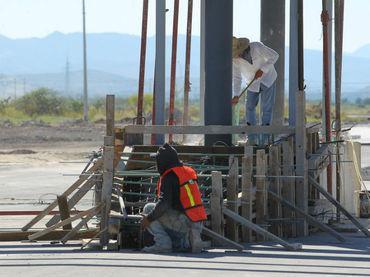 GUADALAJARA, JALISCO (01/NOV/2012.) - The U.S. economic slowdown and assemblers of cars that will not install in the State, are the main reasons why it will not reach the goal of 52,000 jobs 2012, said Jaime Eduardo Martinez Flores, head of the Ministry of Economic Development (SEPROE) of Jalisco.
GUADALAJARA, JALISCO (01/NOV/2012.) - The U.S. economic slowdown and assemblers of cars that will not install in the State, are the main reasons why it will not reach the goal of 52,000 jobs 2012, said Jaime Eduardo Martinez Flores, head of the Ministry of Economic Development (SEPROE) of Jalisco.
Martinez Flores said that the construction sector has been the one that has suffered the creation of jobs and the trend could continue until March. For this last quarter is expected to generate jobs, but will mainly temporary.
"December is traditionally rests many people in the area of ??construction, there are certainly temporary employment growth holiday season, but low construction is expected and the forecast did Coparmex (Confederation of the Mexican Republic) finish around 38,000 to 40,000 new jobs, "he said.
On the tour he did, along with employers to promote Digital Creative City (CCD) in Canada, said that at this time working in the computer node and the construction project: "I interviewed with three companies interested even as some have programmers working in Guadalajara elsewhere and intended to learn more about the business plan of Creative City to see if they move to an apartment or somewhere. Some companies are concerned, are evaluating and seeing how it turns the evolution of the first stage and are in the process of socialization, this year is not going to see
[readon1 url="http://www.informador.com.mx/economia/2012/414830/6/hasta-marzo-mejorara-la-creacion-de-empleo-en-jalisco.htmi"]Source:www.informador.com.mx - Translation by Suyapa Ajuria[/readon1]
G-20 Trade & Investment Promotion Summit Highlights Global Value Chains
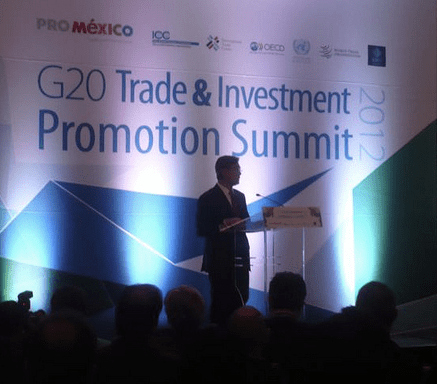 Leaders of trade and investment promotion agencies from around the world converged on Mexico City November 5-6, 2012 to hammer out strategies for cooperation that will help drive a global economic recovery. Representatives of G-20 member countries, multilateral organizations and leading businesses joined in the event activities, which took place at the Four Seasons hotel over the course of two and a half days. In all, 22 agencies from 18 countries took part in the meetings, according to event organizers.
Leaders of trade and investment promotion agencies from around the world converged on Mexico City November 5-6, 2012 to hammer out strategies for cooperation that will help drive a global economic recovery. Representatives of G-20 member countries, multilateral organizations and leading businesses joined in the event activities, which took place at the Four Seasons hotel over the course of two and a half days. In all, 22 agencies from 18 countries took part in the meetings, according to event organizers.
The G-20 Trade & Investment Promotion Summit (TIPS) was held as part of a series of follow-up events to the summit of heads of government of G-20 member countries organized in Los Cabos, Mexico, in June of this year. The G-20 is an organization composed of 20 leading developed and emerging economies, including that of the European Union. The group was launched in 1999 as a forum for consultation and cooperation by finance and banking officials on policy matters affecting international economic stability. The presidency or chair of the G-20 rotates annually. Mexico, as chair for 2012, hosted the Los Cabos meeting of heads of state and took the lead in organizing subsequent events to pursue the group’s agenda to promote healthy economic growth. Mexico’s own investment and trade promotion agency, ProMéxico, acted as host and facilitator during the activities of the November summit.
The formal activities of the TIPS opened with an inauguration and plenary session featuring presentations on key topics to be addressed during the meetings. This session was followed by two days of roundtable work meetings and presentations in a format designed to maximize exchange of ideas and experiences among the participants. Specific themes of roundtable sessions included:
- Building synergies between trade and investment
- Exploring company internationalization
- Peer learning in trade and investment promotion
In addition to the working roundtables, presentations during plenary sessions featured topics such as the emergence of global value chains, the value of joint trade and investment promotion and benchmarking for trade promotion, among others. The roundtables and plenary sessions were led by representatives and specialists from multilateral organizations such as the World Trade Organization (WTO), the United Nations Conference on Trade and Development (UNCTAD) and the Organization for Economic Cooperation and Development (OECD), as well as from country agencies such as UK Trade and Investment (UKTI), the Australian Trade Commission (Austrade) and the Instituto Español de Comercio Exterior (ICEX).
Within the context of the overall themes of cooperation and the importance of facilitating trade and investment, a number of topics received particular emphasis at the meetings. Among the most cited was the growing importance of global value chains (GVCs) in shaping the environment for modern international business. As defined in the event program, GVCs mean that goods and services cross borders multiple times before reaching consumers in their destination market. WTO Chief of Staff Arancha González commented extensively on this topic in her opening remarks, referring to the concept of “trade in tasks” as opposed to trade merely in finished goods. As manufacturing production chains have become ever more globalized in recent years, for example, more and more products are incorporating materials and value-added processes provided in multiple countries over the course of the production process. This evolution is creating products and services that González called “made in the world,” rather than the conventional notion of goods made in one country for export to another.
The rise of GVCs has important implications for numerous areas of both national and international trade policy. Among these, as the WTO’s González emphasized, is the increasingly counterproductive nature of protectionist trade and investment policies conceived in a prior industrial era. In the context of GVCs, attempts to “protect” a particular domestic industry may result in inhibiting the importation of goods or components requiring locally provided added value, or investment in production or service infrastructure that would generate local jobs and technology transfer. As OECD Chief of Staff Gabriela Ramos added in her concluding comments, in the context of GVCs, it is important to relinquish the simplistic idea that imports are the enemy and exports are the friend, as now all may be equally necessary to a country’s healthy economic growth. Speakers remarked that improving the quality of factors such as education and training, social safety nets, infrastructure and environmental protection is key to the success of GVCs, and as such the global production chains optimally will serve to boost these aspects locally.
Throughout the sessions, particular attention was given to the role of small and medium enterprises (SMEs) and the need to incorporate them into GVCs. The WTO’s González urged the assembled promotion agency representatives to help provide SMEs with quick and accurate information to support their internationalization efforts, and UNCTAD Investment and Enterprise Director James Zhan called on multilateral agencies to boost capacity building among SMEs to help incorporate them into the supply chains of multinational corporations.
At the conclusion of the intense two days of meetings, participants expressed enthusiasm for the potential advances that could be achieved by the commitments to cooperation and best practices discussed. In his concluding remarks, Pro Mexico’s Carlos Guzmán presented the following challenges to trade and investment promotion agencies going forward:
- Increase coordination of trade promotion activities with those of investment
- Compensate for resource limitations by increasing collaboration among agencies
- Integrate SMEs into global value chains
- Include input from the private sector into trade and investment policy planning
- Create support networks to link promotion agencies [readon1 url="http://www.vallartatoday.com"]Source:www.vallartatoday.com - Translation by Suyapa Ajuria Nov. 13, 2012[/readon1]
Grupo Aeroportuario del Pacífico Announces 2014 Guidance

GUADALAJARA, Jalisco, Mexico--(BUSINESS WIRE)--Grupo Aeroportuario del Pacífico, S.A.B. de C.V., (NYSE:PAC)(BMV:GAP) (“the Company” or “GAP”) announced its expected guidance for the twelve-month 2014 period (January 1 to December 31, 2014):
Traffic: Increase of 5.0%–6.0%
Aeronautical Revenue: Increase of 7.0%-8.0%
Non-Aeronautical Revenue: Increase of 16.0%-18.0%; with an increase in Commercial Revenues of 14.0%-15.0%
Total Revenue: Increase of 9.0%-10.0%
Cost of Services: Increase of 10.0%-12.0%
EBITDA margin of 66% to 67%
EBITDA: Increase of 9.0% to 10%
Cash Tax: 30%
Total CAPEX: Ps. 643 million
The above figures are estimates based on assumptions that management believes are reasonable and are subject to change over the course of the year based on various factors including: airline performance, domestic and international economic conditions, government regulations, and any other factors that could affect GAP’s traffic and financial results. Please refer to GAP’s Annual Report on Form 20-F for a more extensive list of factors that could affect results.
EBITDA (earnings before interest expense, income taxes, depreciation and amortization) is not a standardized measure of performance or financial condition under the accounting principles contained in International Financial Reporting Standards (“IFRS”). This measure is not comparable to measures used by other entities.
Company Description:
Grupo Aeroportuario del Pacífico, S.A.B. de C.V. (GAP) operates 12 airports throughout Mexico’s Pacific region, including the major cities of Guadalajara and Tijuana, the four tourist destinations of Puerto Vallarta, Los Cabos, La Paz and Manzanillo, and six other mid-sized cities: Hermosillo, Guanajuato, Morelia, Aguascalientes, Mexicali and Los Mochis. In February 2006, GAP’s shares were listed on the New York Stock Exchange under the ticker symbol “PAC” and on the Mexican Stock Exchange under the ticker symbol “GAP”.
This press release may contain forward-looking statements. These statements are not historical facts, and are based on management’s current view and estimates of future economic circumstances, industry conditions, company performance and financial results. The words “anticipates,” “believes,” “estimates,” “expects,” “plans” and similar expressions, as they relate to the company, are intended to identify forward-looking statements. Statements regarding the declaration or payment of dividends, the implementation of principal operating and financing strategies and capital expenditure plans, the direction of future operations and the factors or trends affecting financial conditions, liquidity or results of operations are examples of forward-looking statements. Such statements reflect the current views of management and are subject to a number of risks and uncertainties. There is no guarantee that the expected events, trends or results will actually occur. The statements are based on many assumptions and factors, including general economic and market conditions, industry conditions, and operating factors. Any changes in such assumptions or factors could cause actual results to differ materially from current expectations.
In accordance with Section 806 of the Sarbanes-Oxley Act of 2002 and article 42 of the “Ley del Mercado de Valores”, GAP has implemented a “whistleblower” program, which allows complainants to anonymously and confidentially report suspected activities that may involve criminal conduct or violations. The telephone number in Mexico, facilitated by a third party that is in charge of collecting these complaints, is 01-800-563-0047. The web site is http://www.lineadenuncia.org/gap. GAP’s Audit Committee will be notified of all complaints for immediate investigation.
 |
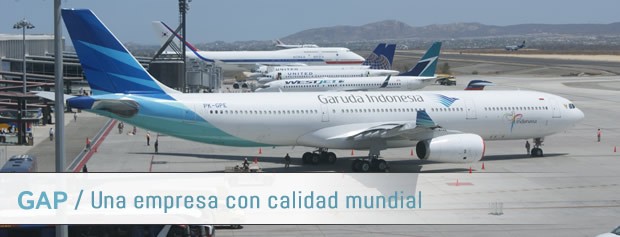 |
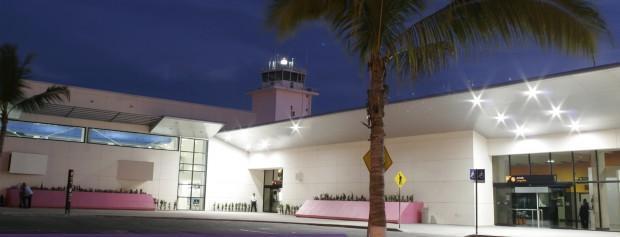 |
[readon1 url="http://news.investors.com/newsfeed-business-wire/011314-141552375-grupo-aeroportuario-del-pac-fico-announces-2014-guidance.aspx?p=2"]Source: news.investors.com[/readon1]
Misconceptions About Mexico
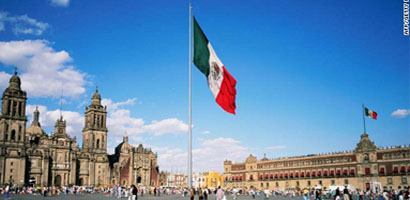 Here’s some trivia. Which of these countries has the highest average income:
Here’s some trivia. Which of these countries has the highest average income:
Oscar Niemeyer Dies at 104, Famed Brazilian Architect
 Oscar Niemeyer, widely regarded as the foremost Latin American architect of the last century,
Oscar Niemeyer, widely regarded as the foremost Latin American architect of the last century,
Puerto Vallarta Becomes an MPI Preferred Partner
 The Puerto Vallarta Tourism Board has signed on to become a “Preferred Partner” of Meeting Professionals International, the premier global association community for meeting and event professionals, as part of its proactive campaign to attract more business travelers from the US and Canada to Mexico’s most Mexican destination.
The Puerto Vallarta Tourism Board has signed on to become a “Preferred Partner” of Meeting Professionals International, the premier global association community for meeting and event professionals, as part of its proactive campaign to attract more business travelers from the US and Canada to Mexico’s most Mexican destination.
In 2013, the Puerto Vallarta Tourism Board headed a delegation of hoteliers and the Puerto Vallarta International Convention Center in a partnership with the Mexico Tourism Board and participated in key industry events including AIBTM, WEC and IMEX. In November 2013, Puerto Vallarta also hosted its first Vallarta Meetings educational trip with 12 meetings planners from the US, Canada and China.
As a Preferred Partner, the Puerto Vallarta Tourism Board’s participation at this year’s World Education Congress in Minneapolis will also include promotion of the destination and its business travel offerings through special editorials, highlighted presence in the MarketSquare where representatives will be able to meet with buyers and introduce them to the destination, present at the Past President’s & Chairman’s Breakfast.
Puerto Vallarta will also host a Focus Group with meeting planners at IMEX America where the destination’s infrastructure, offerings and reputation will be analyzed by the professionals in the industry as a way of obtaining constructive criticism.
Coordinated by LATITUDE, the tourism board's PR agency in the United States and Canada, this partnership makes Puerto Vallarta the only destination to have an alliance with MPI at this level confirming its commitment to this segment.
[readon1 url="https://snt149.mail.live.com/default.aspx?id=64855#tid=cmmE2E3TXd4xGVB2w75bLmvg2&fv=1&fid=flfq1ANdvk_06pRt1rp"]Source:snt149.mail.live.com [/readon1]








